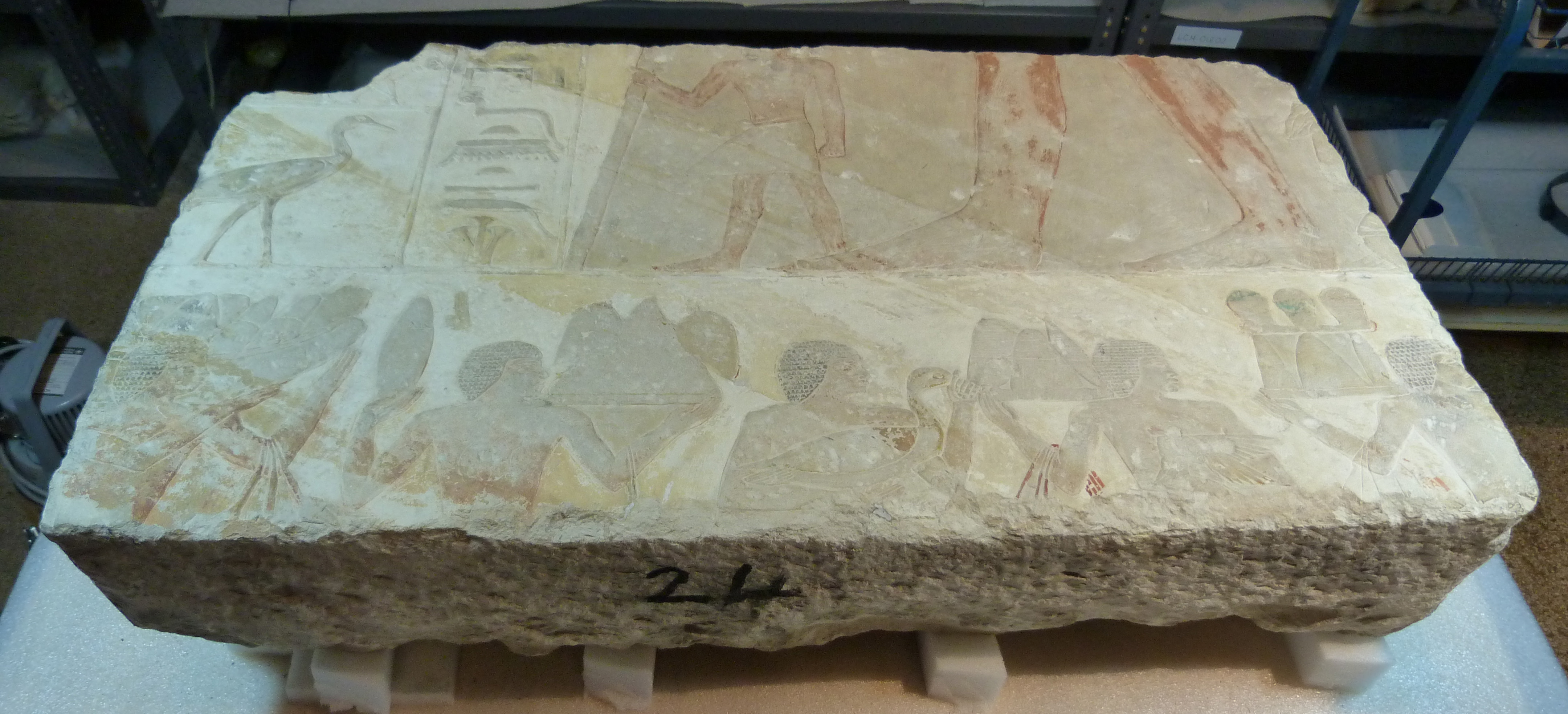https://www.penn.museum/sites/artifactlab/2018/03/27/transformation-tidbits-on-a-tuesday/
On 03/27/2018 01:41 PM, mollygleeson wrote:
Transformation Tidbits on a Tuesday By: Anna O'Neill, Jonathan Stevens, and Céline Wachsmuth
It's Tuesday! And time for another transformation post. As the Kaipure team is wrapping up our work, we have been reflecting upon how different everything has become from when we first started the project in June 2017, almost a year ago. We have seen many transformations, both big and small. Here are some snapshots of transformations we've seen throughout the project:
First thing's first, we have our simple, but satisfying, surface cleaning transformation. Jonathan shares one of his blocks in the middle of cleaning:

Photo by Jonathan Stevens Cleaning in progress. Most of the background of this limestone block has been dry-cleaned using white rubber erasers, vulcanized latex sponges and cosmetic sponges. The brighter areas are clean and any area that looks gray has not been cleaned yet.
Cleaning is fun, especially when the results are so nice and neat!
Anna had the chance to rejoin two block fragments, something that we haven't been able to do much of because of the size and weight of most of the blocks, even though some are broken and we know how they fit together.

Photos by Anna O'Neill For this piece, both the main block and missing fragment were cleaned and the break edges consolidated with 2% w/v Paraloid B-72. Then the fragment was adhered with 40% w/v Paraloid B-72 and held in place with straps overnight until the join had set. The cracks were filled with a white Paraloid B-72/glass microballoon mixture, which provides support to areas of loss and helps to protect the fragile edges along the break. The fill was then painted with Golden acrylic paints to integrate it with the rest of the piece.
One of the last blocks Céline had the chance to work on also had one of the most fragile surfaces of any of the blocks. It was a lengthy, but incredible treatment. Both images below show the process of stabilizing the block's surface. After cleaning, loose and lifting fragments were secured by injecting a 30% solution of Paraloid B-72 in acetone beneath the flakes. The unprotected edges of the flakes were supported and protected with a mixture of Paraloid B-72 and glass microballoons, applied by injection with a syringe, and then in-painted with acrylics to match the surface.

Photos by Céline Wachsmuth Detail of before, during, and post treatment of a section of the block. There was significant lifting and destabilization over much of the block's surface.

Photos by Céline Wachsmuth Detail of before, during, and post treatment of a section of the block. This section was floating on the surface, meaning it was no longer attached.
Stay tuned for a final post about the finishing touches on the Kaipure Tomb Chapel project.
The Kaipure Conservation Project is funded through a generous grant from the American Research Center in Egypt (ARCE) Antiquities Endowment Fund (AEF) which was established though a grant from the United States Agency for International Development (USAID).
-- Sent from my Linux system.

No comments:
Post a Comment